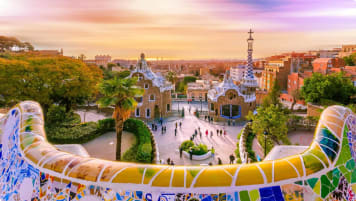15 of the Best Places to Visit in Spain
15 of the Best Places to Visit in Spain Spain is one of Europe’s most popular holiday destinations, attracting 82.8 million international visitors in 2018. We have collected the 15 best places to visit in…
25 Jul 18 · 8 mins read

15 of the Best Places to Visit in Spain
Spain is one of Europe’s most popular holiday destinations, attracting 82.8 million international visitors in 2018. We have collected the 15 best places to visit in Spain in the list that follows below. This is by no means a definitive list, but it can be your starting point if you are considering visiting the Iberian Peninsula. This list of places provides an insight into Spain’s rich history and the development of its now world-famous cultural and artistic hubs including commentary and observations on the best cities to visit in Spain.
-
Barcelona
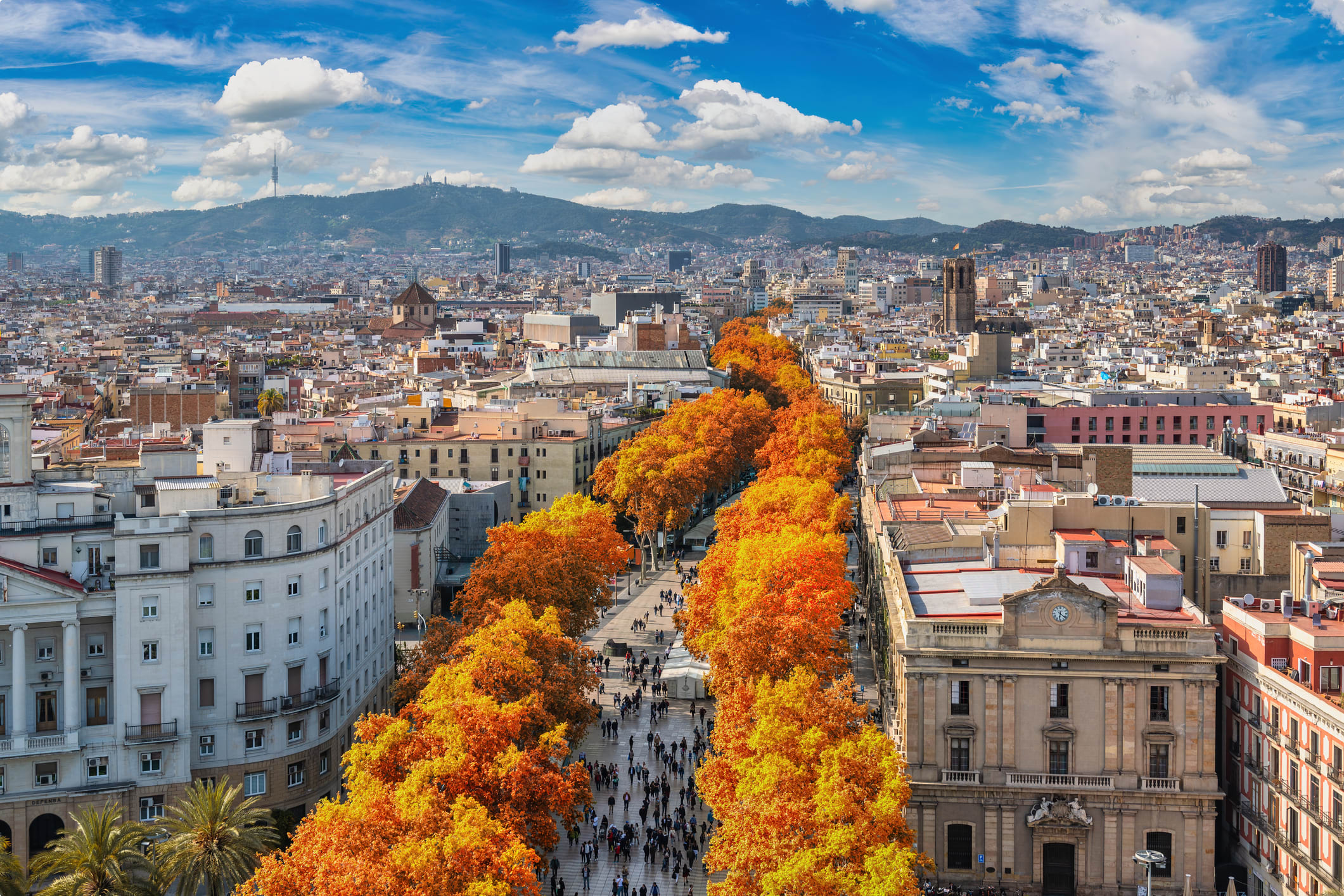
-
La Rioja Wine District
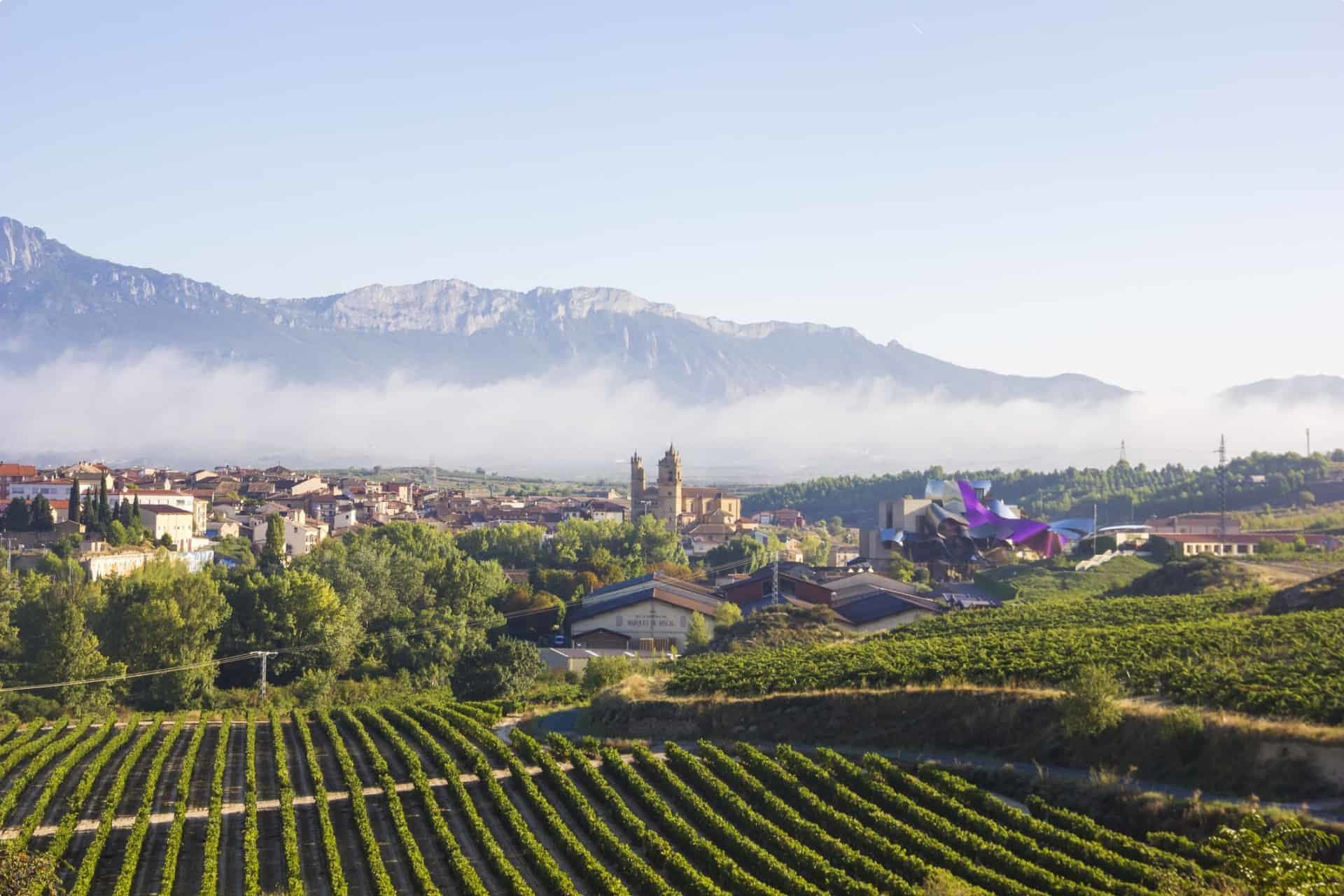
The La Rioja Wine District is a wine-growing region famed for its rioja, of which there are seven varieties: four red and three white. Tour the charming town of Haro for its baroque and plasteresque architecture.
It is best known, however, for its bodegas or wine cellars, which attract travellers from afar to sample their locally produced vintages. Apart from its wine, one should not overlook other specialities, such as Pimientos del Piquillo, a delicious and sweet red pepper, and the local marzipan of Sierra de Cameros. Both are renowned throughout Spain.
-
Pilgrims in Pamplona
The otherwise quiet city of Pamplona explodes into life in July during the Fiesta of Los Sanfermines. The city is world-famous for the running of the bulls, and for being one of Ernest Hemingway’s favourite cities. Hemingway visited Pamplona numerous times and wrote about the city in his first novel, The Sun Also Rises.
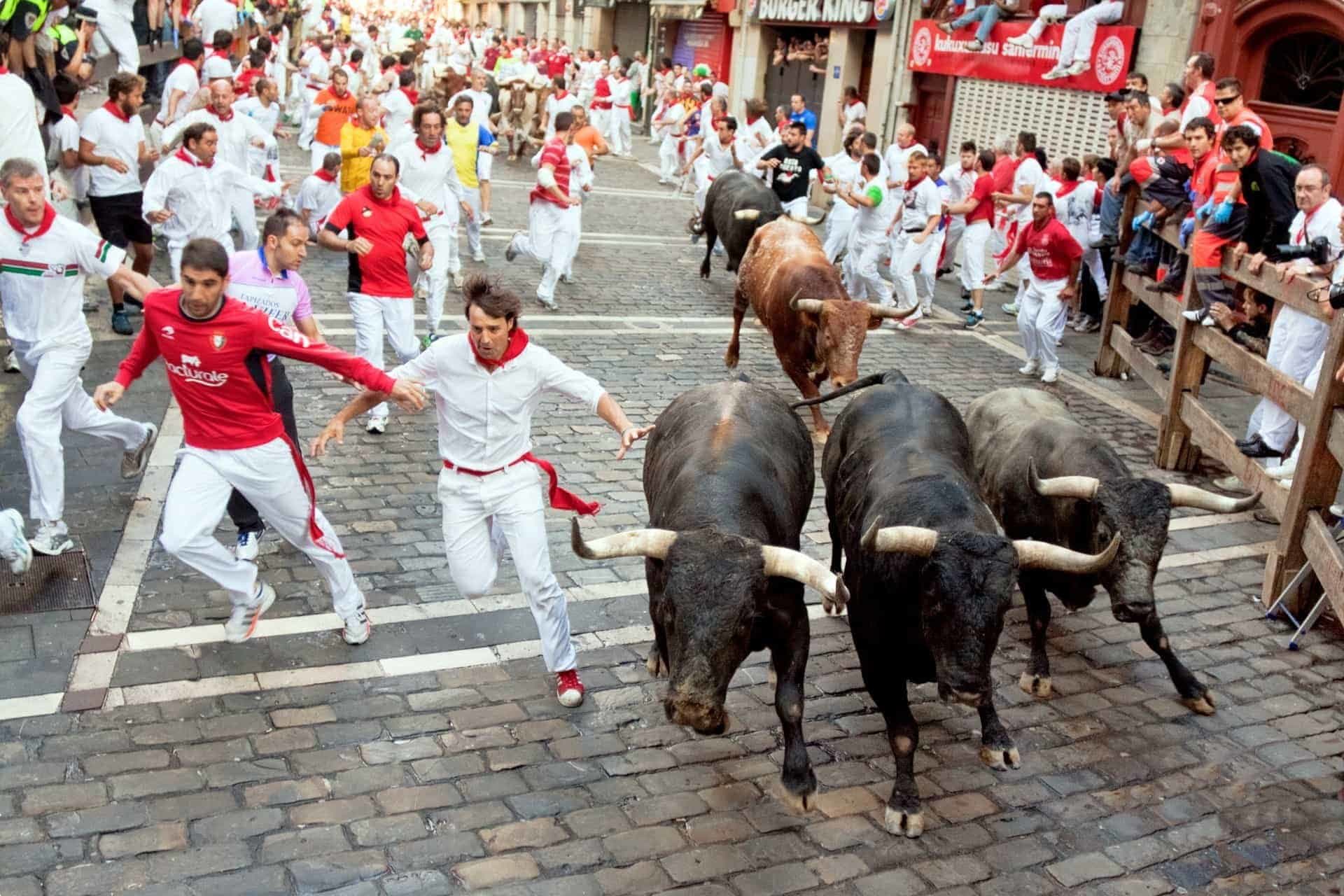
Travellers today can walk around Pamplona following the writer’s footsteps.It is also one of the major towns along the traditional Way of Saint James pilgrimage.
Many journeys commence here for its ease of access, and it saves climbing over the Pyrenees. Our Saint James Way Small Group Walking Tour stops in Pamplona. While here, we explore the Church of St Mary of Eunate, and cross the Puente la Reina, “the crossroads of the ways”. This is a quaint, medieval town where two main pilgrim routes (Orreaga/Roncesvalles from Paris) and Somport (from Toulouse) converge.
Read more about pilgrimage walks in our article here, and in our article on European pilgrim walks.
-
Bilbao’s Guggenheim
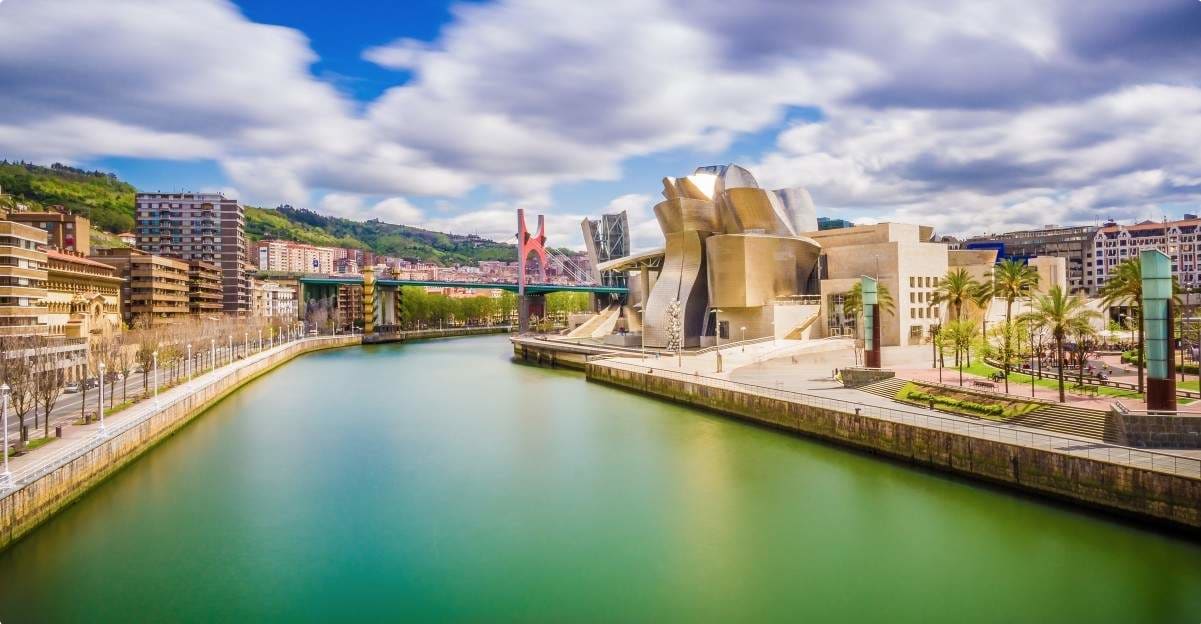
This is one of Basque Country’s most important commercial and cultural centres. Its Guggenheim Museum is a wondrous construction, designed in the Deconstructivism style. The groundbreaking work of Canadian architect Frank Gehry, this museum has anchored Bilbao not only on the bank of the Estuary, but also on the shores of cultural prominence. Explore the building and its exhibitions on the museum’s website. But remember: nothing can compare to experiencing the real thing!
-
The tomb of El Cid
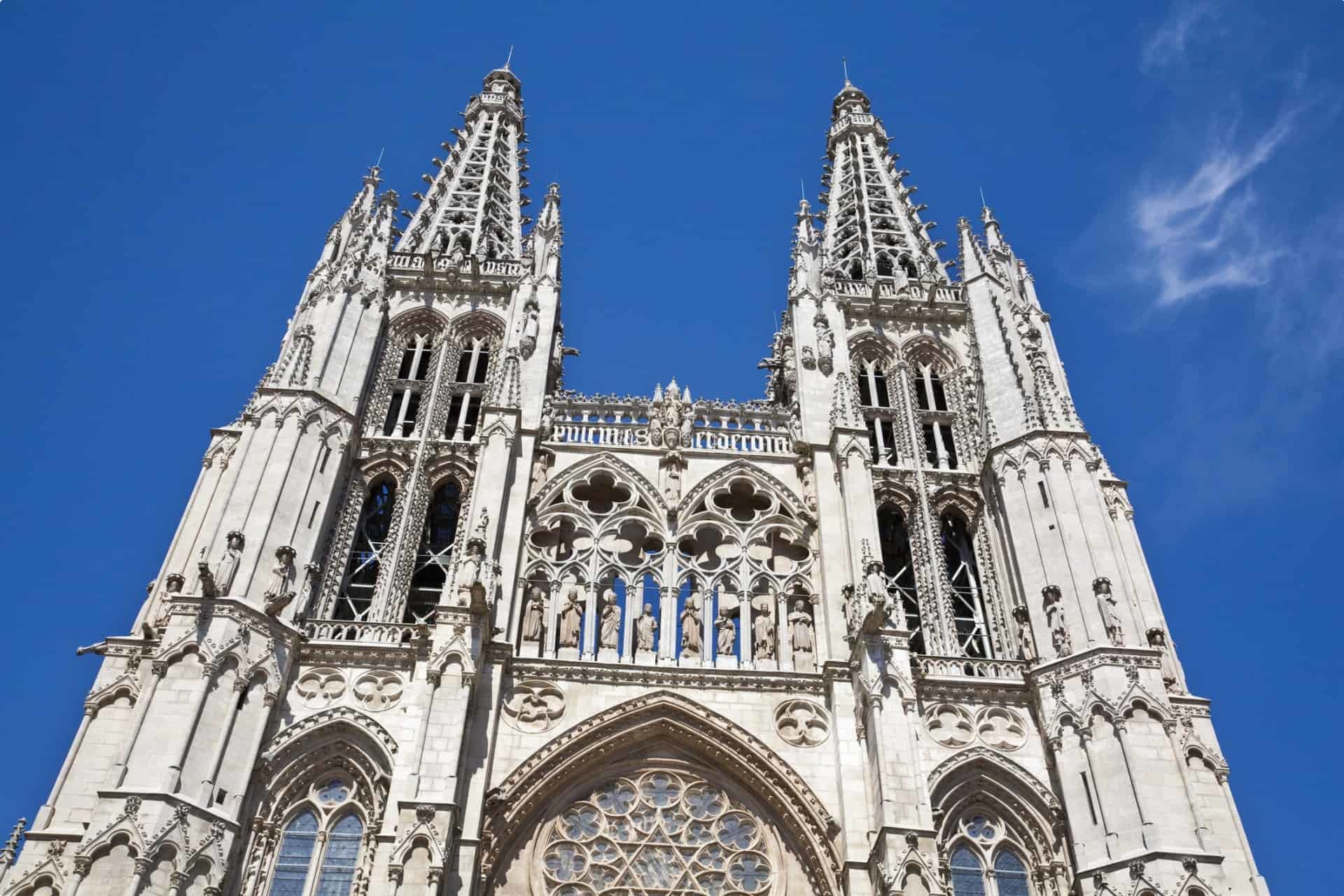
Burgos Cathedral, Spain The city of Burgos feature’s Spain’s third largest cathedral. Begun in 1221, it took more than three centuries to complete. It’s architectural elements reflect influences from Germany, France and the Low Countries. The cathedral contains the tomb of the romantic hero of the Reconquista, El Cid, and that of his wife, Doña Jimena.
Burgos is also the site of the Miraflores Convent, a Carthusian monastery and the former summer residence of the Spanish kings.
-
Madrid
Madrid is one of the liveliest and most exciting cities in Europe. A key destination for those interested in Moorish Spain, the capital also features Roman ruins at its outskirts. It tells the story of a long and interesting history.
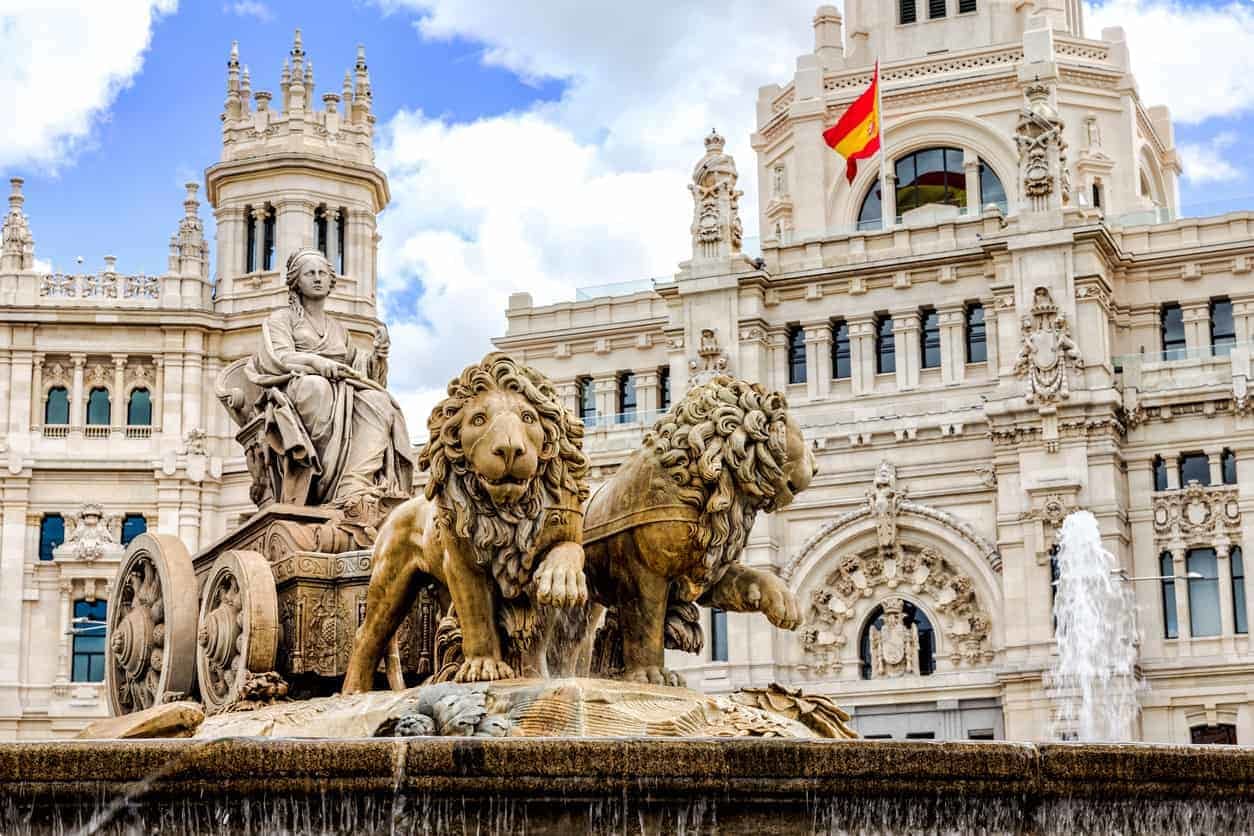

The city’s historic centre features the Palacio Real, the Plaza Mayor, the Parque del Buen Retiro, and the 140-hectare Retiro Park. Some of the finest museums can be found in Madrid, including the Prado, the Reina Sofia, and the Thyssen-Bornemisza. Just some 45 kilometres to the north-west of Madrid, one finds the famous 16th-century El Escorial palace with its centrepiece basilica dedicated to St Lawrence. A host of historic cities surround the Comunidad de Madrid, making it an absolute must on any Spain itinerary.
-
Toledo’s Gothic cathedral
-
Medieval Ávila
-
Salamanca and the ‘Golden Age’
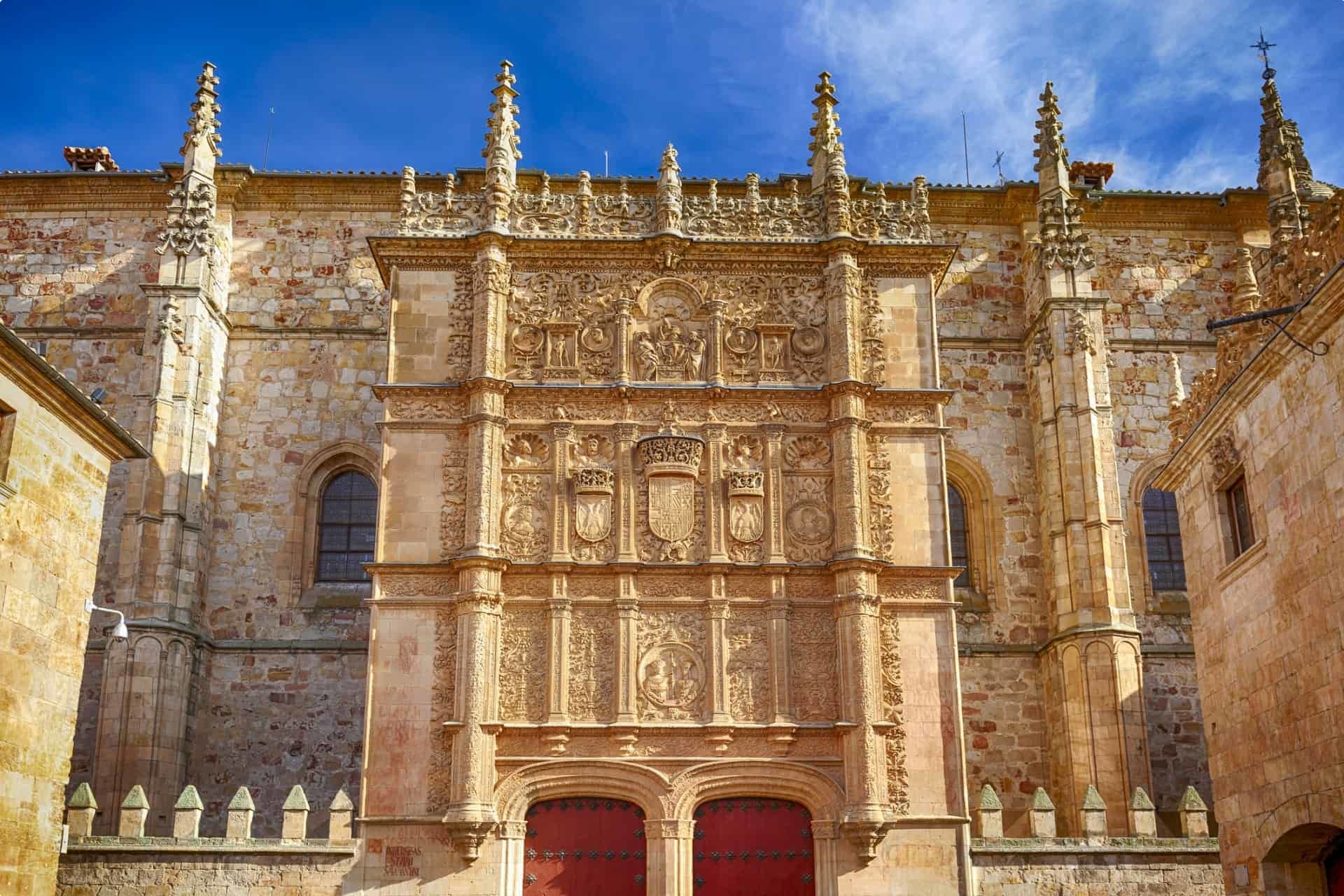
Salamanca is home to the oldest university in Spain and one of the oldest in all of Europe. There are records of the university having granted degrees as early as 1134. However, it received the royal charter of foundation in 1218, making it possibly the fourth, or even the third, oldest European university in continuous operation. Salamanca was declared a World Heritage Site by UNESCO. Its beautifully preserved, fine examples of gothic, renaissance, mudéjar, plateresque and baroque architecture are evocative of Spain’s glorious past: its ‘Golden Age’.
-
-
Zamora, the Museum of the Romanesque
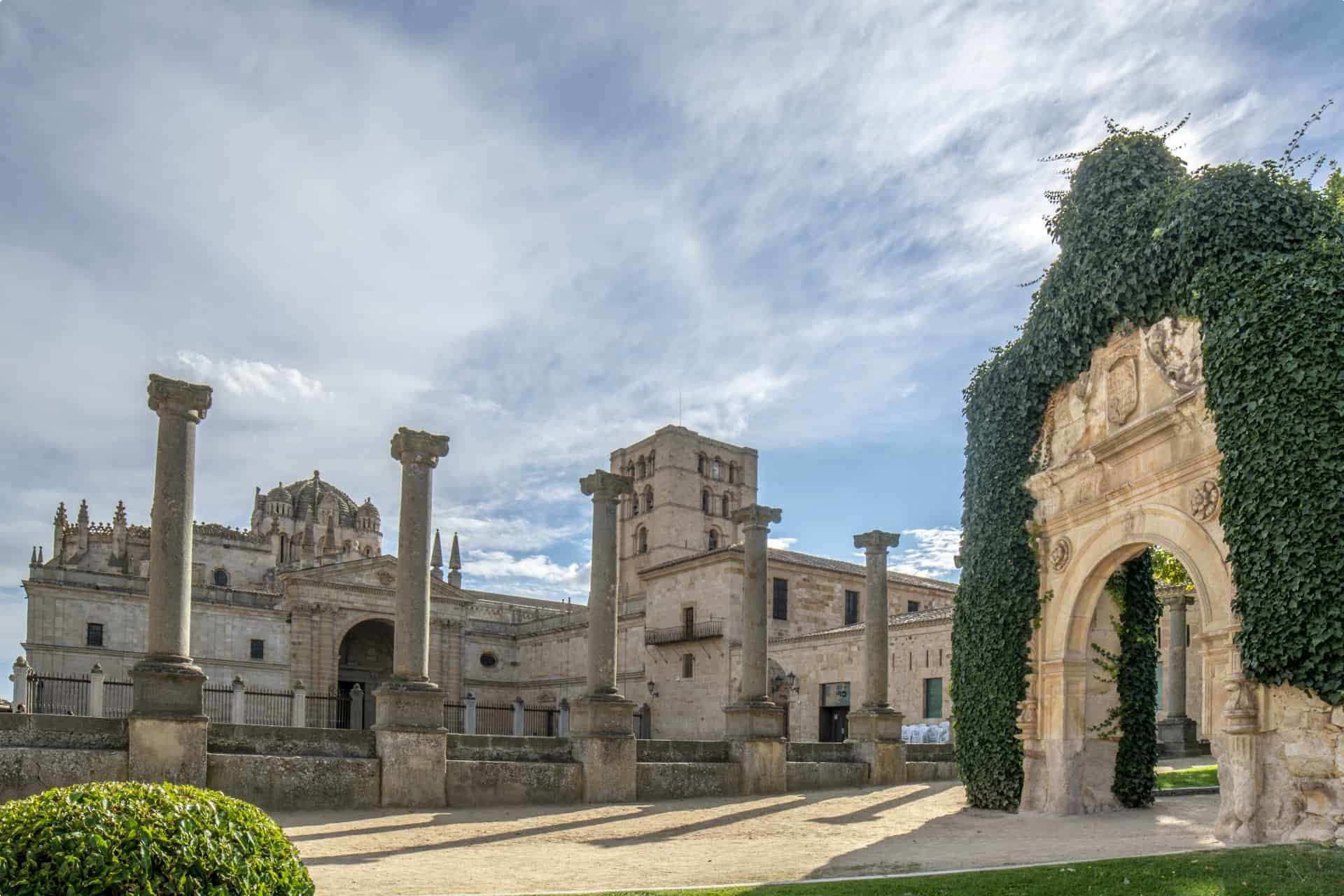
Principal facade and Dome of San Salvador Romanesque Cathedral in Zamora Lying between Salamanca and the Portuguese municipality of Bragança is the medieval town of Zamora. Of Roman origin, this town has had a checkered history, much the same as that of many other Iberian towns. First formally established as a Roman town on the banks of the Duero River, this town later fell to the Visigoths, then to the Moors. It was finally reclaimed for Christendom during the course of the Reconquista by successive Christian monarchs. Zamora is famous for its profusion of Romanesque churches dating from the 12th and 13th centuries, numbering 24 in all. So profound is the presence of the Romanesque in Zamora, that this small town has become known as the Museum of the Romanesque.Seville
-
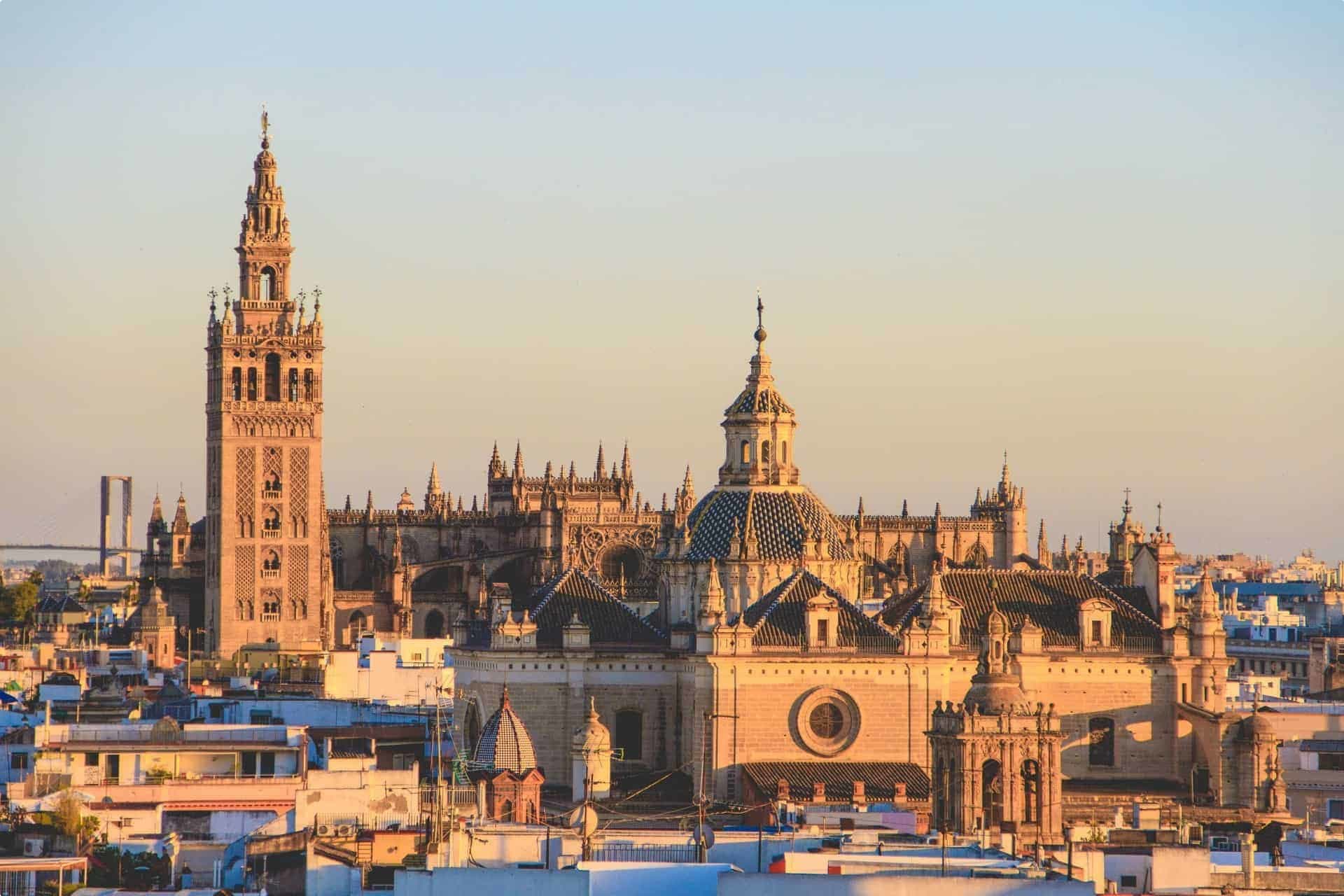
Founded as the Roman city Hispalis and now the capital of the Andalusia region, the lively and disarming city of Seville, located in Southern Spain is a popular tourist destination. Forming a monumental complex in the heart of Seville are the three UNESCO Heritage sites: the Seville Cathedral with the Giralda minaret, the Alcázar (fortress), and the Archivo de Indias. Seville for the traveller is definitely one of the best cities in Spain to visit.
The Seville Cathedral is the largest Gothic cathedral in the world with its Giralda tower standing at 96 meters. Once an Almohad mosque, it was turned into a Catholic Cathedral following the Reconquista in 1248 and now holds the remains of Juan of Aragon, son of Ferdinand and Isabella, and Christopher Columbus. The Alcázar (fortress) of Seville, imbued with Moorish influences, is the oldest royal palace still in use in Europe. The Lonja, which became the Archivo de Indias (General Archive of the Indies), contains valuable documents illustrating the reach of the Spanish Empire in the Americas and in Asia.
Expect to experience fiestas, music, dance, colour, and spectacle. Residents here are renowned for ‘having a good time’, even more, perhaps, than other Spaniards. Finally, Seville is the city of the Flamenco and of Carmen, so be sure to immerse yourself in its dynamic culture.
-
Jerez de la Frontera
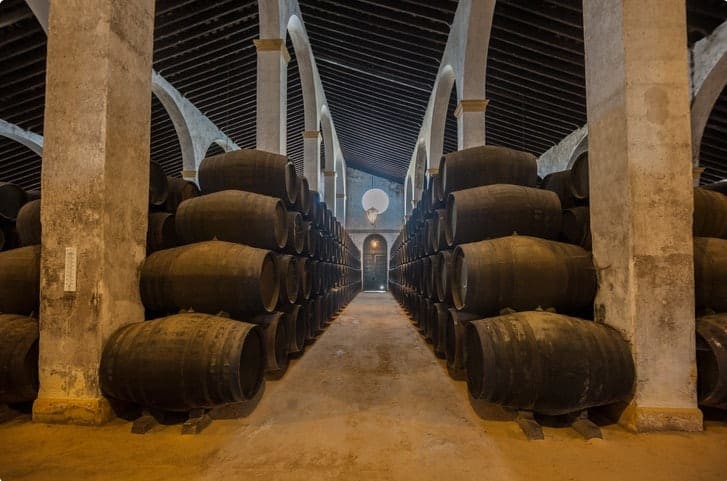
Western Andalusia is well known for the production of sherry. Jerez de la Frontera, which lies thirty-six kilometres north-east of Cádiz, is most famous for the production of this fortified wine. In addition to its 11th-century alcázar, built around a mosque, and its cathedral with its painting by the master Zurbarán, Jerez is also famous for its Real Escuela Andaluza de Arte Ecuestre where public dressage displays are held. As one might expect, Jerez has a number of wine cellars, known in Spanish as bodegas, which can be visited on your Spain tour.
-
Moorish Spain in Córdoba
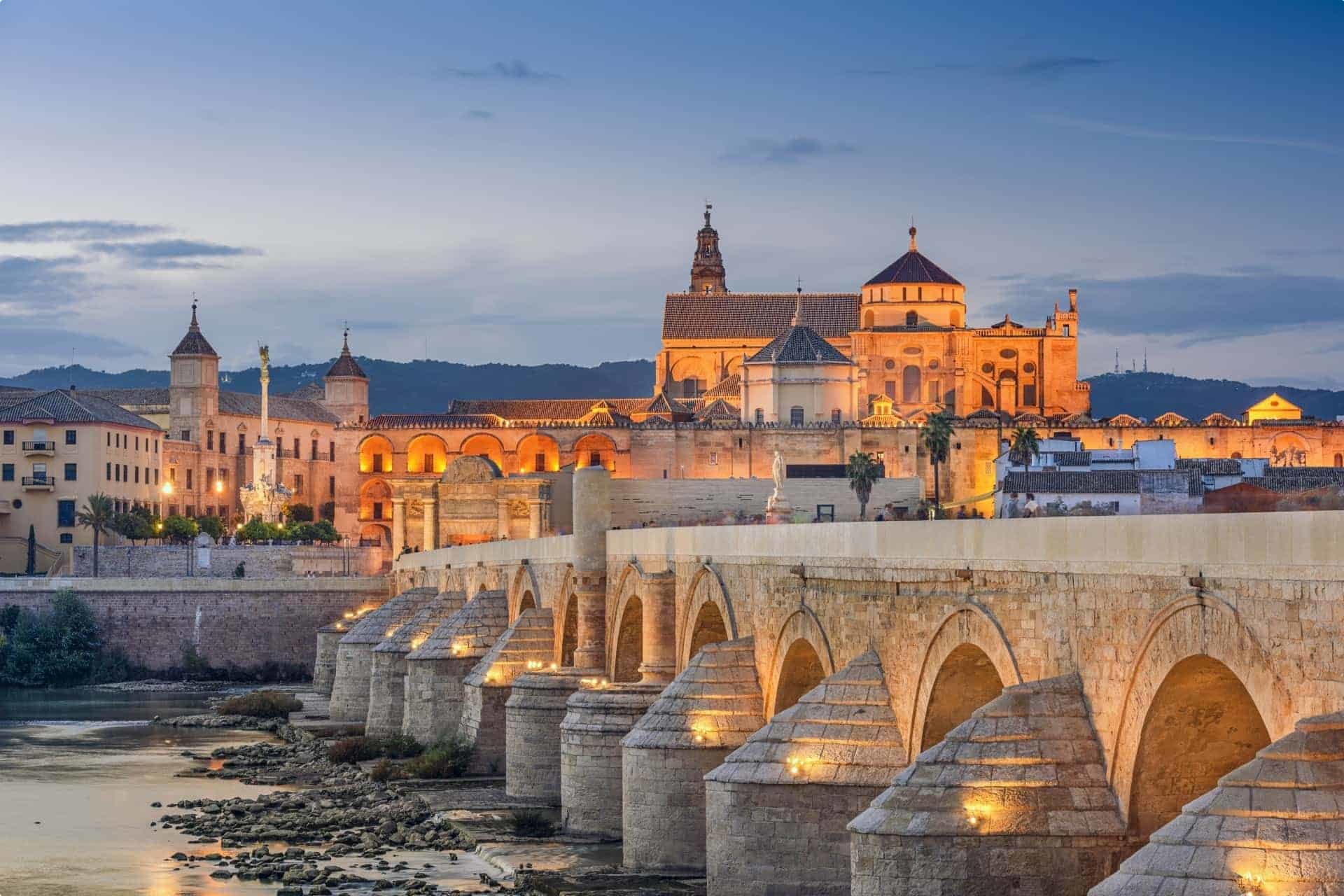
For three centuries, Córdoba was the centre of Muslim power in the Iberian Peninsula until it was taken by Fernando III in 1236 during the Spanish Reconquista. The Mezquita, the former Great Mosque, was first built between 785 and 787 AD. Its more than 850 columns of granite, jasper and marble that support the roof were recycled from Roman and Visigoth ruins. Over the centuries, the mosque was expanded and embellished. After the Reconquista, a cathedral was built within the mosque and reconsecrated as a Christian place of worship. The provinces of Córdoba and Granada remain at the heart of Moorish Spain.
-
Granada
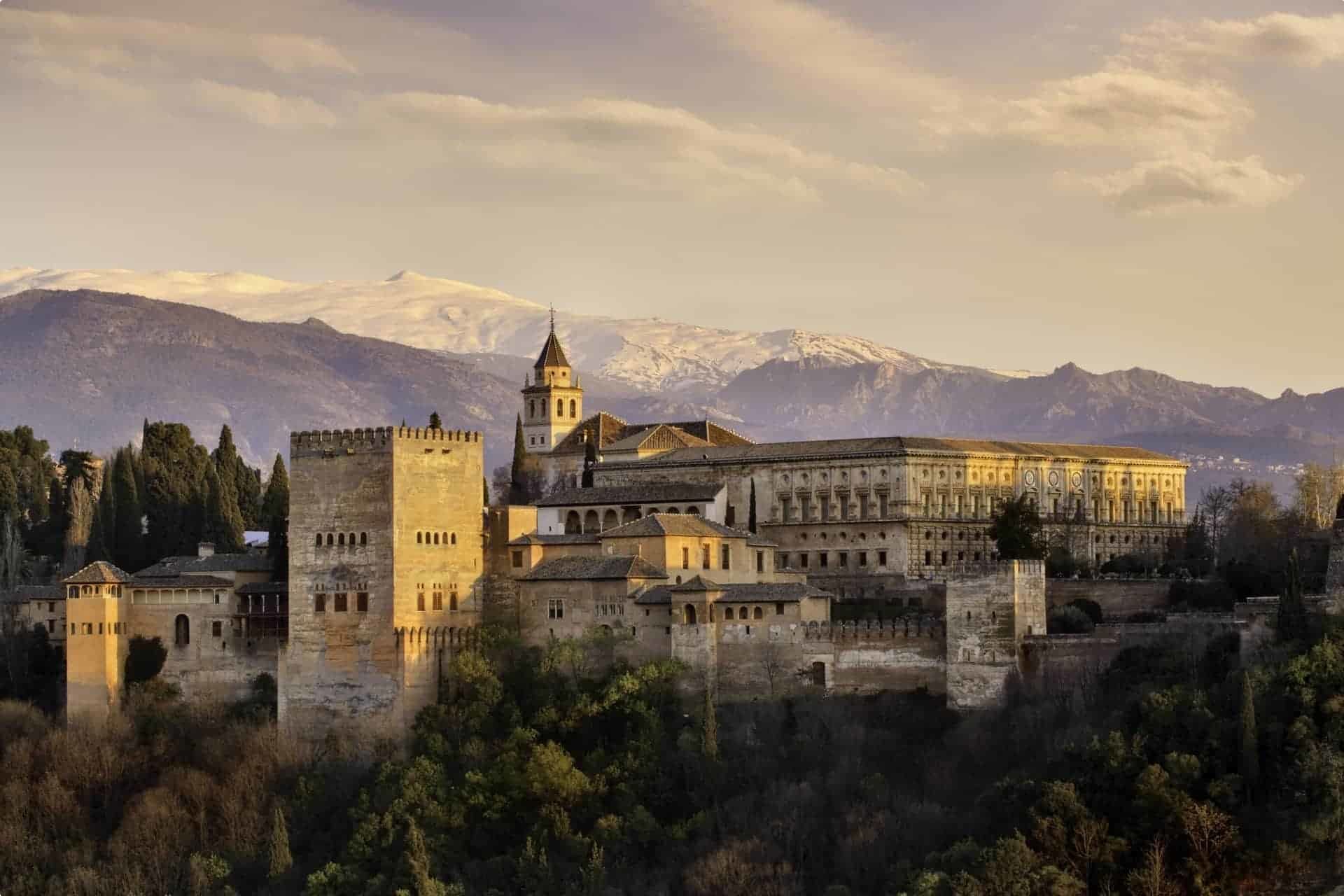
Alhambra, Granada, Spain Granada is the site of Alhambra, a magnificent, Moorish palace and fortress complex perched atop a hill. The World Heritage site is testament to the artistic creativity of the Nasrid dynasty. So the Alhambra complex includes the Royal Lodges, the 13th-century Alcazaba, and the 16th-century palace of the Holy Roman Emperor, Charles V. It also features the Palacio de Generalife: the summer palace and country estate of the Nasrid rulers. Its gardens will make you feel as though you are in a fairy-tale, and the whole complex cannot be missed. It has inspired songs, stories and poems alike. Click here to learn more about Alhambra.
-
The Way of Saint James
Last but not least is the famous Way of Saint James.
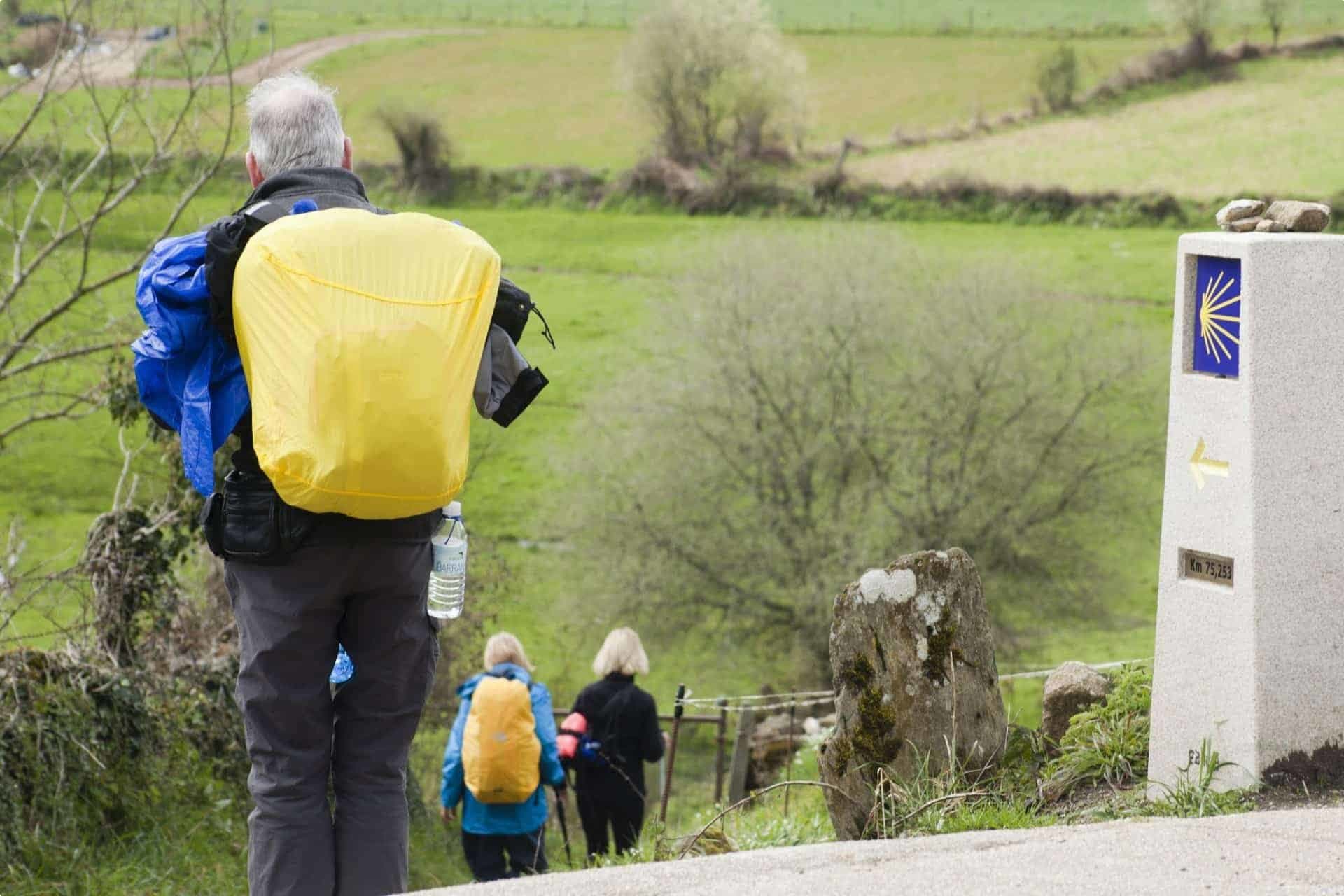
It is one of the most popular pilgrimage routes in the world. Equally known by its Spanish name El Camino, it follows a medieval pilgrimage route through northern Spain. The final destination of the pilgrimage is the Cathedral of Santiago de Compostela, where the body of St James – disciple of Jesus – is said to be buried. In the tenth, eleventh and twelfth centuries, it was second only to Rome and Jerusalem as a pilgrim destination. After a long period of neglect, El Camino was revived in the mid-1980s. Some say Paulo Coelho’s book The Pilgrimage inspired the renewed interest. Over the last thirty years, the number of pilgrims has increased to several tens of thousands a year. This is a great way to experience Spain’s stunning scenery and traditions, why not take the journey yourself?
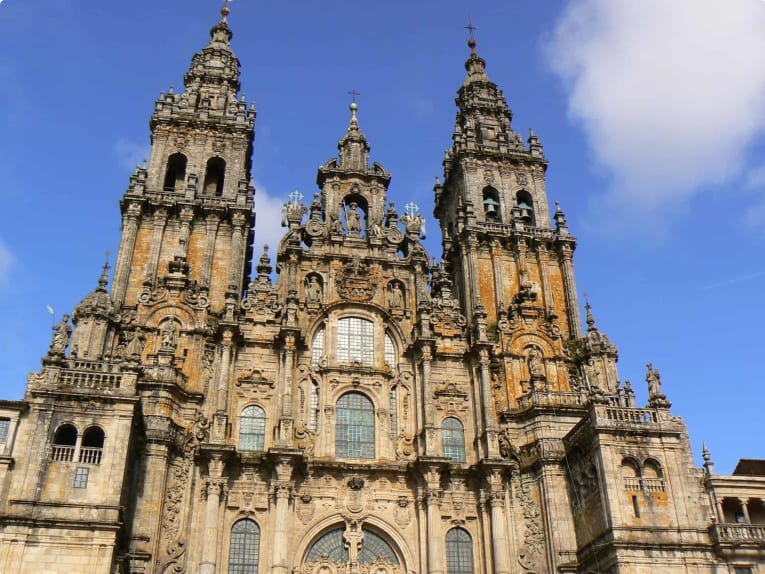
FAQs
Barcelona
Barcelona is the capital of Catalonia and one of the most culturally dynamic cities in Europe. In the late 1800s, it experienced a cultural rebirth in the form of music, literature, art and architecture, making it the city we know and love today.
Montjiuc Hill is a must-see. At 213 metres high, it overlooks the city, and boasts museums and galleries, exhibitions halls and fountains. In addition, Barcelona’s Gothic quarter, or Barrio Gótico, features an inspiring mix of medieval, Art Noveau and modernist architecture.
The Museo de Art Moderno can be found here, along with Gaudi’s Sagrada Familia, the Gothic cathedral and the ancient royal palace.
Barcelona is known worldwide as the home of Antonio Gaudi, the uber famous Catalan architect. Gaudi’s designs have had a profound influence on Spanish architecture, and left a profound imprint on the modern city of Barcelona. He had a remarkable attention to detail and integrated crafts such as ceramics, stained glass and carpentry into his architecture. He rarely drew detailed plans of his designs, preferring instead to construct three-dimensional models. A deeply religious man, Catholic images appear throughout his work, earning him the nickname ‘God’s architect’. Amazingly, seven of his works have been declared World Heritage Sites by UNESCO.
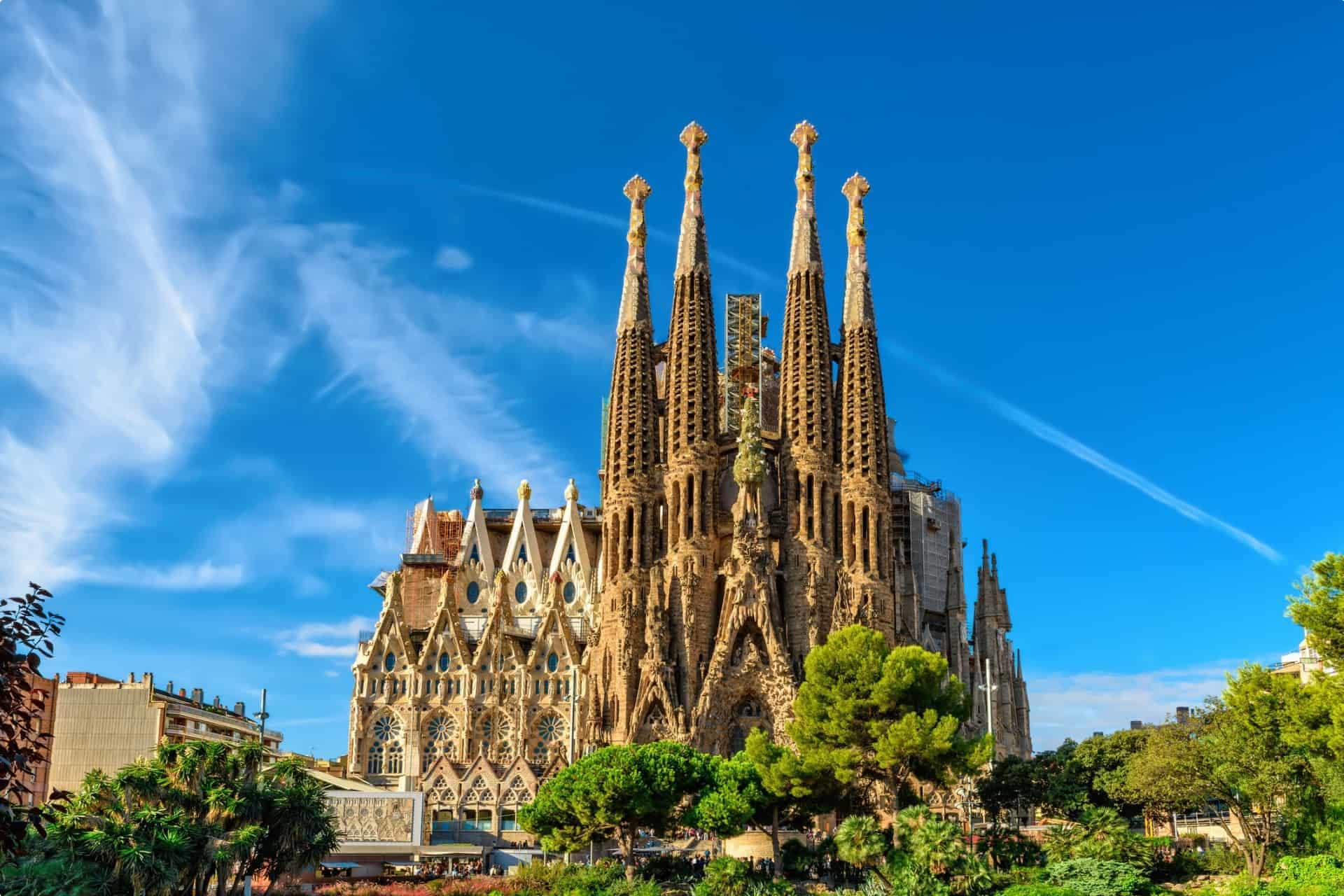
You can also enjoy some tasty tapas at Barcelona’s tapas bars. Tapa means “cover” or “lid” in Spanish, which referred to the way these small dishes were served before, covered to protect them from flies. But of course now the tapa has been elevated and is served in the city’s swankiest bars.

Click here to read our Barcelona Travel Notes.
La Rioja Wine District

The La Rioja Wine District is a wine-growing region famed for its rioja, of which there are seven varieties: four red and three white. Tour the charming town of Haro for its baroque and plasteresque architecture.
It is best known, however, for its bodegas or wine cellars, which attract travellers from afar to sample their locally produced vintages. Apart from its wine, one should not overlook other specialities, such as Pimientos del Piquillo, a delicious and sweet red pepper, and the local marzipan of Sierra de Cameros. Both are renowned throughout Spain.
Pilgrims in Pamplona
The otherwise quiet city of Pamplona explodes into life in July during the Fiesta of Los Sanfermines. The city is world-famous for the running of the bulls, and for being one of Ernest Hemingway’s favourite cities. Hemingway visited Pamplona numerous times and wrote about the city in his first novel, The Sun Also Rises.

Travellers today can walk around Pamplona following the writer’s footsteps.It is also one of the major towns along the traditional Way of Saint James pilgrimage.
Many journeys commence here for its ease of access, and it saves climbing over the Pyrenees. Our Saint James Way Small Group Walking Tour stops in Pamplona. While here, we explore the Church of St Mary of Eunate, and cross the Puente la Reina, “the crossroads of the ways”. This is a quaint, medieval town where two main pilgrim routes (Orreaga/Roncesvalles from Paris) and Somport (from Toulouse) converge.
Read more about pilgrimage walks in our article here, and in our article on European pilgrim walks.
Bilbao's Guggenheim

This is one of Basque Country’s most important commercial and cultural centres. Its Guggenheim Museum is a wondrous construction, designed in the Deconstructivism style. The groundbreaking work of Canadian architect Frank Gehry, this museum has anchored Bilbao not only on the bank of the Estuary, but also on the shores of cultural prominence. Explore the building and its exhibitions on the museum’s website. But remember: nothing can compare to experiencing the real thing!
The tomb of El Cid

The city of Burgos feature’s Spain’s third largest cathedral. Begun in 1221, it took more than three centuries to complete. It’s architectural elements reflect influences from Germany, France and the Low Countries. The cathedral contains the tomb of the romantic hero of the Reconquista, El Cid, and that of his wife, Doña Jimena.
Burgos is also the site of the Miraflores Convent, a Carthusian monastery and the former summer residence of the Spanish kings.
Madrid
Madrid is one of the liveliest and most exciting cities in Europe. A key destination for those interested in Moorish Spain, the capital also features Roman ruins at its outskirts. It tells the story of a long and interesting history.


The city’s historic centre features the Palacio Real, the Plaza Mayor, the Parque del Buen Retiro, and the 140-hectare Retiro Park. Some of the finest museums can be found in Madrid, including the Prado, the Reina Sofia, and the Thyssen-Bornemisza. Just some 45 kilometres to the north-west of Madrid, one finds the famous 16th-century El Escorial palace with its centrepiece basilica dedicated to St Lawrence. A host of historic cities surround the Comunidad de Madrid, making it an absolute must on any Spain itinerary.
Toledo's Gothic cathedral

One of the most impressive monuments in Toledo is the city’s Gothic cathedral. Begun in the 13th century, it incorporates mudéjar, Renaissance and Baroque elements in its many chapels, choir stalls and sacristy.
Toledo is also the city of El Greco, whose works can be seen in the church of Santo Tomé and in the Casa y Museo de El Greco. Wandering along in the old quarter of the city, one comes to the Judería, the old Jewish quarter which once housed eleven synagogues. Now, just two of them remain: the Sinagoga del Tránsito, which houses the Museo Sefardí, and the Sinagoga de Santa María La Blanca. A host of other churches, monasteries, converted mosques and varied vestiges of its history add to the allure of this extraordinary city.
Medieval Ávila
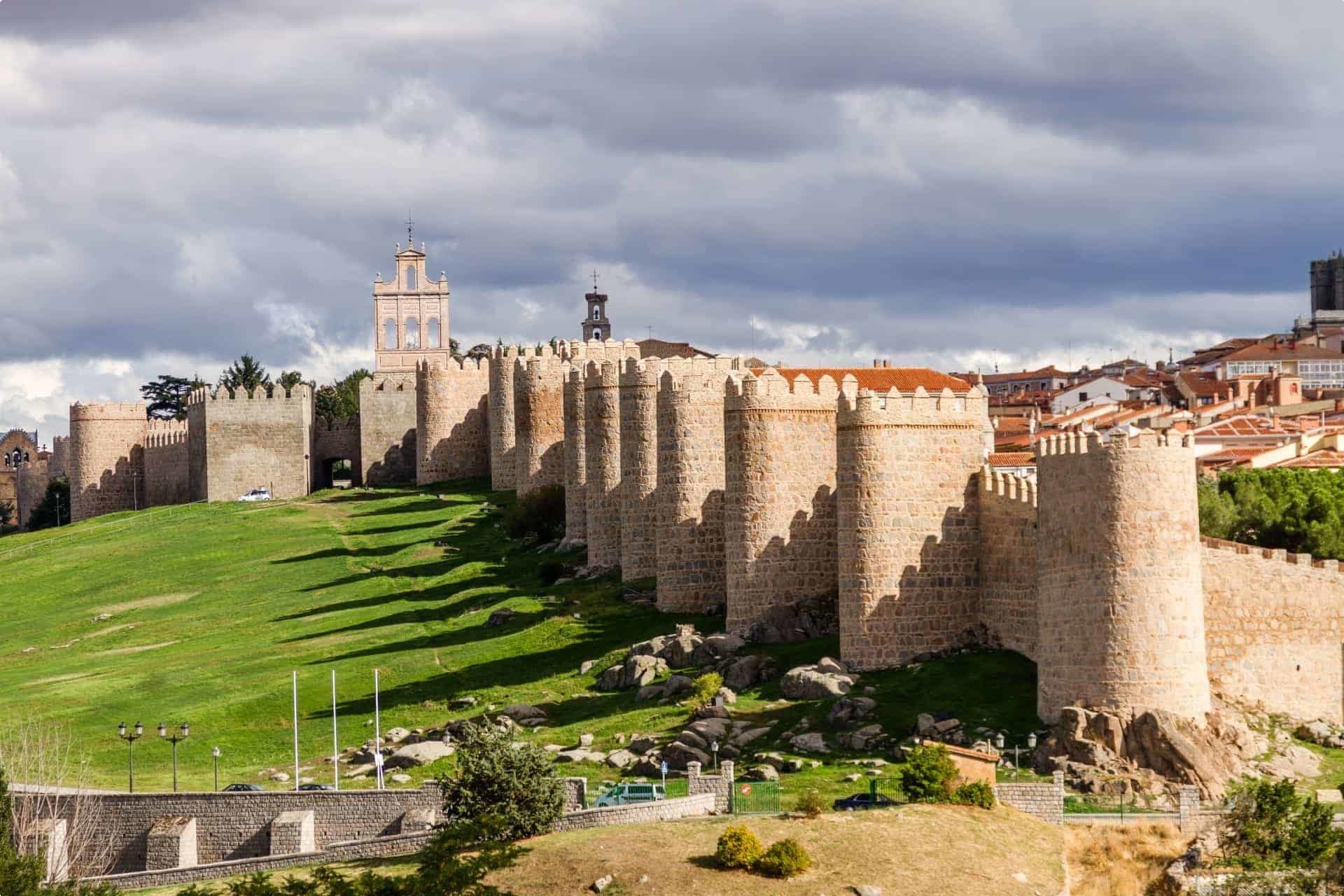
Ávila resembles a quintessential medieval town. With its defensive walls and towers still intact, Ávila presents the traveller with an amazing image of a bygone era. It is believed that the site was first settled by an Iberian tribe. This tribe subsequently fell under the sway of imperial Rome, the Visigoths, the Muslim caliphates, and finally the Christian monarchs. After the collapse of the Muslim power base at Toledo in the 11th century, Ávila became a knightly city of noble families. The city is also famous for its own early Gothic cathedral. Interestingly, it constructed in a somewhat bastion-like manner. Planned as a cathedral-fortress, its granite apse solidly interlocked within the fabric of the defensive walls which still encircle the town.
Salamanca and the 'Golden Age'

Salamanca is home to the oldest university in Spain and one of the oldest in all of Europe. There are records of the university having granted degrees as early as 1134. However, it received the royal charter of foundation in 1218, making it possibly the fourth, or even the third, oldest European university in continuous operation. Salamanca was declared a World Heritage Site by UNESCO. Its beautifully preserved, fine examples of gothic, renaissance, mudéjar, plateresque and baroque architecture are evocative of Spain’s glorious past: its ‘Golden Age’.
Zamora, the Museum of the Romanesque

Lying between Salamanca and the Portuguese municipality of Bragança is the medieval town of Zamora. Of Roman origin, this town has had a checkered history, much the same as that of many other Iberian towns. First formally established as a Roman town on the banks of the Duero River, this town later fell to the Visigoths, then to the Moors. It was finally reclaimed for Christendom during the course of the Reconquista by successive Christian monarchs. Zamora is famous for its profusion of Romanesque churches dating from the 12th and 13th centuries, numbering 24 in all. So profound is the presence of the Romanesque in Zamora, that this small town has become known as the Museum of the Romanesque.
Seville

Founded as the Roman city Hispalis and now the capital of the Andalusia region, the lively and disarming city of Seville, located in Southern Spain is a popular tourist destination. Forming a monumental complex in the heart of Seville are the three UNESCO Heritage sites: the Seville Cathedral with the Giralda minaret, the Alcázar (fortress), and the Archivo de Indias. Seville for the traveller is definitely one of the best cities in Spain to visit.
The Seville Cathedral is the largest Gothic cathedral in the world with its Giralda tower standing at 96 meters. Once an Almohad mosque, it was turned into a Catholic Cathedral following the Reconquista in 1248 and now holds the remains of Juan of Aragon, son of Ferdinand and Isabella, and Christopher Columbus. The Alcázar (fortress) of Seville, imbued with Moorish influences, is the oldest royal palace still in use in Europe. The Lonja, which became the Archivo de Indias (General Archive of the Indies), contains valuable documents illustrating the reach of the Spanish Empire in the Americas and in Asia.
Expect to experience fiestas, music, dance, colour, and spectacle. Residents here are renowned for ‘having a good time’, even more, perhaps, than other Spaniards. Finally, Seville is the city of the Flamenco and of Carmen, so be sure to immerse yourself in its dynamic culture.
Jerez de la Frontera

Western Andalusia is well known for the production of sherry. Jerez de la Frontera, which lies thirty-six kilometres north-east of Cádiz, is most famous for the production of this fortified wine. In addition to its 11th-century alcázar, built around a mosque, and its cathedral with its painting by the master Zurbarán, Jerez is also famous for its Real Escuela Andaluza de Arte Ecuestre where public dressage displays are held. As one might expect, Jerez has a number of wine cellars, known in Spanish as bodegas, which can be visited on your Spain tour.
Moorish Spain in Córdoba

For three centuries, Córdoba was the centre of Muslim power in the Iberian Peninsula until it was taken by Fernando III in 1236 during the Spanish Reconquista. The Mezquita, the former Great Mosque, was first built between 785 and 787 AD. Its more than 850 columns of granite, jasper and marble that support the roof were recycled from Roman and Visigoth ruins. Over the centuries, the mosque was expanded and embellished. After the Reconquista, a cathedral was built within the mosque and reconsecrated as a Christian place of worship. The provinces of Córdoba and Granada remain at the heart of Moorish Spain.
Granada

Granada is the site of Alhambra, a magnificent, Moorish palace and fortress complex perched atop a hill. The World Heritage site is testament to the artistic creativity of the Nasrid dynasty. So the Alhambra complex includes the Royal Lodges, the 13th-century Alcazaba, and the 16th-century palace of the Holy Roman Emperor, Charles V. It also features the Palacio de Generalife: the summer palace and country estate of the Nasrid rulers. Its gardens will make you feel as though you are in a fairy-tale, and the whole complex cannot be missed. It has inspired songs, stories and poems alike. Click here to learn more about Alhambra.
The Way of Saint James
Last but not least is the famous Way of Saint James.

It is one of the most popular pilgrimage routes in the world. Equally known by its Spanish name El Camino, it follows a medieval pilgrimage route through northern Spain. The final destination of the pilgrimage is the Cathedral of Santiago de Compostela, where the body of St James – disciple of Jesus – is said to be buried. In the tenth, eleventh and twelfth centuries, it was second only to Rome and Jerusalem as a pilgrim destination. After a long period of neglect, El Camino was revived in the mid-1980s. Some say Paulo Coelho’s book The Pilgrimage inspired the renewed interest. Over the last thirty years, the number of pilgrims has increased to several tens of thousands a year. This is a great way to experience Spain’s stunning scenery and traditions, why not take the journey yourself?

This concludes Odyssey Travellers list of fifteen best places to visit in Spain. Comments or suggestions are welcome on the space at the conclusion of this article.
Tours of Spain as part of a small group of mature-aged travellers
After reading this list you may finally want to experience Spain’s warm hospitality, rich traditions, cosmopolitan cities, and fascinating history with Odyssey Traveller. Our small group tours are designed especially for the active mature-aged traveller who seeks to learn more about history and culture. We aim to turn tourists into travellers.
Our newest Discover Spain tour runs for 21 days as we immerse ourselves in the grand sights and rich history of Spain. This tour is book-ended by the biggest cities of Spain–starting in the capital of Madrid and ending in Barcelona–with stops in smaller but equally beautiful towns that are not normally included in other commercial Spanish tours.
This link details all Odyssey Traveller small group tours of Spain for you to consider.
These articles may also assist you with your travel plans to visit Spain.
- Why join a small group tour?
- Advice for walking tours, such as The Way of Saint James.
- Practising Responsible Travel
- EU Introduces New Authorisation System for Visa-Free Travellers
- Women’s Walking Shoes
- Selecting Shoes and Socks
- Nine European Pilgrimage Routes
- History and European Pilgrim Walks
About Odyssey Traveller.

Odyssey Traveller is committed to charitable activities that support the environment and cultural development of Australian and New Zealand communities. We specialise in educational small group tours for seniors, typically groups between six to 15 people from Australia, New Zealand, USA, Canada and Britain. Odyssey has been offering this style of adventure and educational programs since 1983.
We are also pleased to announce that since 2012, Odyssey has been awarding $10,000 Equity & Merit Cash Scholarships each year. We award scholarships on the basis of academic performance and demonstrated financial need. We award at least one scholarship per year. We’re supported through our educational travel programs, and your participation helps Odyssey achieve its goals.
Odyssey Traveller also has a Loyalty Program for regular travellers. Membership of the alumni starts when you choose to take your first international small group tour with Odyssey Traveller. To see the discounts and benefits of being a Bronze, Silver, Gold, and Diamond alumni member with us, please see this page.
For more information on Odyssey Traveller and our educational small group tours, visit and explore our website. Alternatively, please call or send an email. We’d love to hear from you!
Related Tours
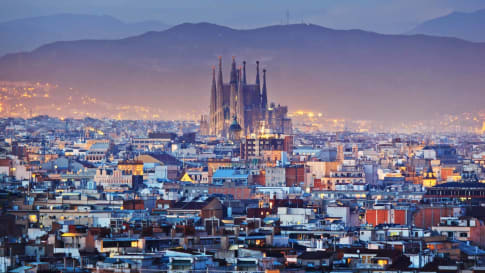
21 days
Sep, MayDiscover Spain
Visiting Spain
Join us on this immersive 21-day small-group journey through Spain, designed for couples and solo travelers alike. With a minimal single supplement, this tour is perfect for those seeking a more small group journeys.
Discover the heart and soul of Spain with daily itineraries led by knowledgeable local guides who provide authentic insights and unique experiences. From the historic streets of Madrid to the vibrant energy of Barcelona, you’ll explore iconic landmarks, savor regional cuisine, and connect with the rich cultural heritage of this enchanting country.
From A$14,750 AUD
View Tour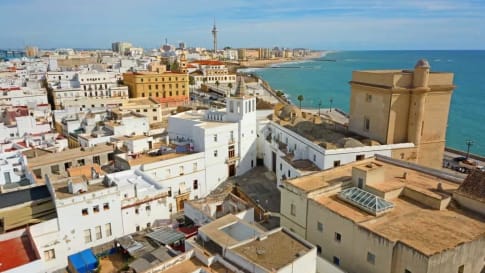
21 days
May, Aug, SepHabsburg Spain vs Tudor England: small group tour exploring 16th century history of England & Spain
Visiting England
This holiday with a leading tour operator allows the escorted tour for seniors to explore the life and times of the royal families responsible for making England and Spain so significant in the 16th century with local guides providing the travel experience for the detailed itineraries. We spend 10 days travelling from London to Madrid.
From A$14,995 AUD
View Tour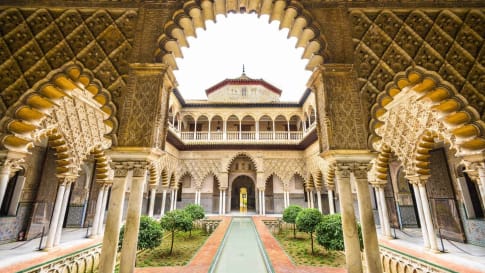
17 days
Mar, OctMoors in Spain
Visiting Spain
A small group tour of Spain exploring Spain's Moorish past. Your tour leader discovers and traces of the art, architecture, and culture and religious reign and of the Moors in Spain visiting their key cities of Madrid, Toledo, Seville and the cities of Andalusia.
From A$15,875 AUD
View Tour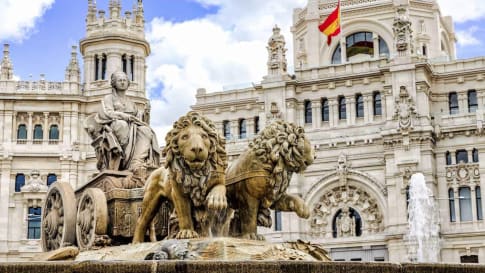
days
Apr, Sep, Oct, MarShort Spain Tour for senior and mature travellers
Visiting Spain
Join our small group guided tour of Spain, exploring this fascinating country over 10 nights with like minded people. We start in Barcelona and make our way slowly towards Madrid. Enjoy the food and culture while learning about the history of each location from our expert local guides and Odyssey Program Leader.
From A$7,990 AUD
View Tour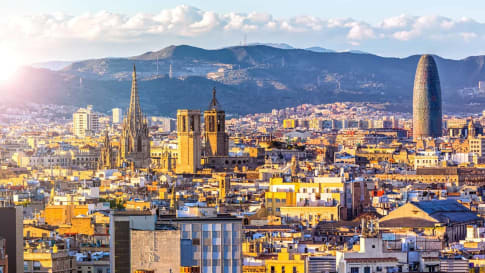
21 days
Apr, Sep, AugBarcelona Small Group Tour | The city explored in-depth
Visiting Spain
Small group journeys from one of the best small group tour companies Europe that delve into Barcelona's history, culture, and cuisine. Daily itineraries for couples and solo travellers with like minded people. An escorted tour of Barcelona based in an apartment with local guides sharing authentic experiences and knowledge.
From A$13,570 AUD
View Tour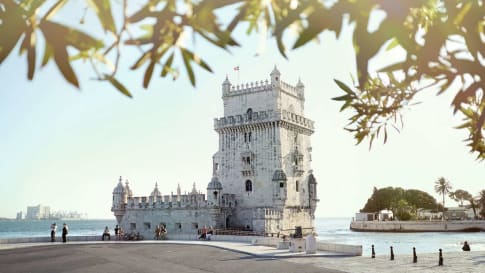
21 days
Jun, SepLisbon & Barcelona small group tour
Visiting Portugal, Spain
An escorted tour for like minded people that provides mature couples and solo travellers with daily itineraries that provide authentic experiences with qualified local guides in the great cities of Lisbon and Barcelona over 21 days. For solo travellers a nominal single supplement is charged.
From A$14,955 AUD
View Tour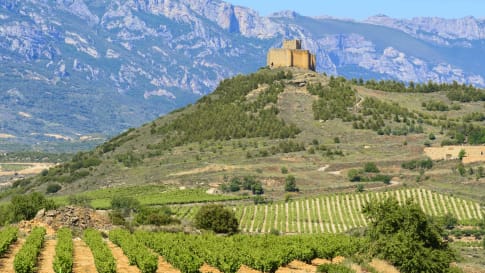
24 days
Apr, Oct, MarSmall Group Guided Tours of Spain and Portugal
Visiting Portugal, Spain
Our program explores the lands of Spain and Portugal, two countries bound by many centuries of history reflected in their modern cultures. Divided by history and language, contiguous neighbours Spain and Portugal were once host to gigantic empires that still bear their languages and lifestyles. A small group tour for couple and solo travellers.
From A$17,035 AUD
View Tour
